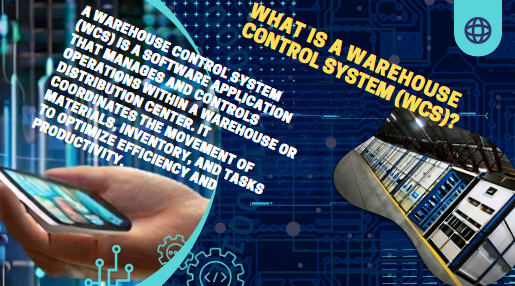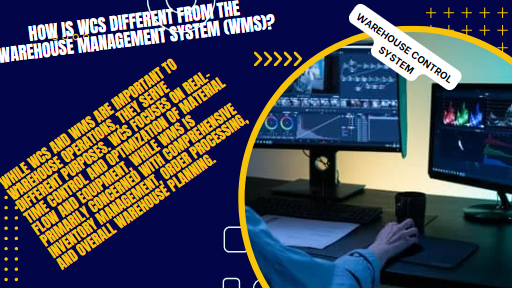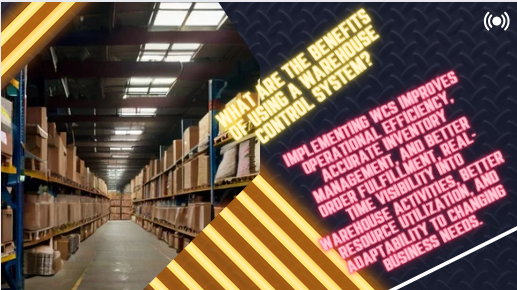Warehouse Control System (WCS) is a vital component in supply chain management, acting as the nerve center that organizes the complex operations within the warehouse. This comprehensive system is designed to optimize and streamline the flow of goods, ensuring efficiency, accuracy, and agility in handling inventory.
- Understanding Warehouse Control Systems (WCS)
- Role of WCS in modern storage
- Future trends and challenges
- Conclusion
- Frequently Asked Questions:
- What is a Warehouse Control System (WCS)?
- How is WCS different from the Warehouse Management System (WMS)?
- What are the major functions of a Warehouse Control System?
- What types of warehouses benefit from implementing Warehouse Control System?
- How does Warehouse Control System integrate with other systems?
- What are the benefits of using a warehouse control system?
- Can WCS accommodate different types of warehouses and workflows?
- How does Warehouse Control System contribute to warehouse automation?
- What are the challenges associated with implementing a warehouse control system?
- What are the future trends in warehouse control systems?

Understanding Warehouse Control Systems (WCS)
Main functions of Warehouse Control System (WCS)
Inventory Management: WCS manages the movement and storage of inventory items within the warehouse, tracking their location, quantity, and condition in real-time.
Task Allocation:
It allocates tasks to warehouse resources such as automated systems, machinery, and human labor while optimizing their utilization based on priority, efficiency, and available resources.
Order Fulfillment:
Coordinates the picking, packing, and shipping processes, ensuring that orders are assembled correctly and shipped on time.
Integration and Communication:
WCS interfaces with various other systems such as Warehouse Management Systems (WMS), Enterprise Resource Planning (ERP) software, Material Handling Equipment (MHE), and conveyance systems, ensuring seamless communication and data flow.

Key Components and Features
User Interface:
WCS often has a user-friendly interface that allows warehouse managers to monitor and control operations, track inventory levels, and generate reports.
Control Algorithms:
Advanced algorithms control the decision-making processes within the WCS, optimizing routes to choose from, directing automated machinery, and balancing workloads.
Real-time data analysis:
By collecting and analyzing real-time data, WCS provides insight into warehouse performance metrics, enabling proactive decision-making and continuous improvement.
Scalability and Flexibility:
A robust WCS accommodates changing business needs, increased volumes, new workflows, and evolving technologies.

Integration and Interoperability
WMS Integration:
WCS often collaborates with warehouse management systems, accompanying each other to ensure smooth warehouse operations. While WMS focuses on broad planning and control, WCS handles finer operational details.
ERP integration:
Integration with enterprise resource planning systems helps synchronize data related to inventory, orders, and finance, providing a holistic view of warehouse operations in the broader business context.
MHE Connectivity:
WCS communicates with material handling equipment such as automated guided vehicles (AGVs), conveyor systems, and robotics, orchestrating their movements and actions.

Role of WCS in modern storage
Efficiency and accuracy
WCS optimizes workflow by strategically assigning tasks and directing operations, reducing the waste of time and resources. Its accuracy in inventory management reduces order fulfillment errors, thereby improving customer satisfaction and retention.
Adaptability and agility
In an era of dynamic market demands, WCS enables warehouses to rapidly adapt to changing needs by reconfiguring processes and resources. This facilitates the quick incorporation of new technologies and integration with emerging trends such as IoT, AI, and machine learning.
Increased visibility and control
Real-time monitoring and reporting capabilities empower warehouse managers with comprehensive insights, helping with proactive decision-making and troubleshooting.
The ability to track inventory movements at every stage increases traceability and accountability.

Future trends and challenges
Automation and Robotics
WCS will increasingly leverage automation and robotics for more efficient and accurate operations, reducing manual intervention and accelerating throughput.
Data Analytics and AI
Advanced analytics and AI-powered insights will further optimize warehouse operations, forecasting demand, identifying patterns, and refining strategies.
Challenges
Integration Complexity:
With the wide range of technologies, ensuring seamless integration and compatibility between different systems remains a challenge.
Cyber Security:
The interconnected nature of WCS with other systems exposes it to cyber security threats, requiring robust security measures.
Conclusion
Warehouse control systems stand as a vital asset in the modern warehouse, revolutionizing logistics and supply chain management. Its ability to synchronize, optimize, and organize various operational aspects empowers businesses to deal with the complexities of the modern market landscape. As technology continues to progress, the role of WCS will become more important in promoting efficiency and innovation in warehouse management.
Click here for more topics
Frequently Asked Questions:
What is a Warehouse Control System (WCS)?
A warehouse control system (WCS) is a software application that manages and controls operations within a warehouse or distribution center. It coordinates the movement of materials, inventory, and tasks to optimize efficiency and productivity.
How is WCS different from the Warehouse Management System (WMS)?
While WCS and WMS are important to warehouse operations, they serve different purposes. WCS focuses on real-time control and optimization of material flow and equipment, while WMS is primarily concerned with comprehensive inventory management, order processing, and overall warehouse planning.
What are the major functions of a Warehouse Control System?
WCS performs various essential functions, including inventory management, work allocation, order fulfillment, interfacing with machinery and systems, real-time monitoring, and data analysis for decision-making.
What types of warehouses benefit from implementing Warehouse Control System?
Warehouses across a variety of industries, including manufacturing, retail, e-commerce, and logistics, benefit from WCS implementation. This is especially valuable in warehouses dealing with high-volume operations or complex material handling processes.
How does Warehouse Control System integrate with other systems?
WCS interacts with various systems such as Warehouse Management System (WMS), Enterprise Resource Planning (ERP) software, Material Handling Equipment (MHE), and Automated Guided Vehicles (AGV) through standardized communication protocols to ensure seamless data flow and coordination. Is integrated.
What are the benefits of using a warehouse control system?
Implementing WCS improves operational efficiency, accurate inventory management, and better order fulfillment, real-time visibility into warehouse activities, better resource utilization, and adaptability to changing business needs.
Can WCS accommodate different types of warehouses and workflows?
Yes, WCS is designed to be flexible and scalable, allowing it to adapt to different warehouse layouts, processes, and workflows. It can be customized to suit the specific needs and requirements of different types of warehouses.
How does Warehouse Control System contribute to warehouse automation?
WCS plays a vital role in warehouse automation by coordinating and controlling automated equipment such as conveyor systems, robotics, and automated guided vehicles (AGVs), optimizing their movements and functions within the warehouse.
What are the challenges associated with implementing a warehouse control system?
Common challenges include integration complexities with existing systems, ensuring interoperability between different technologies, cybersecurity risks, initial setup costs, and the need for trained personnel to operate and maintain the system.
What are the future trends in warehouse control systems?
The future of WCS includes the integration of advanced analytics for AI, machine learning, and projecting capabilities, the adoption of robotics and automation, increased connectivity with Internet of Things (IoT) devices, and a continued focus on improving efficiency and adaptability in warehouse operations.
